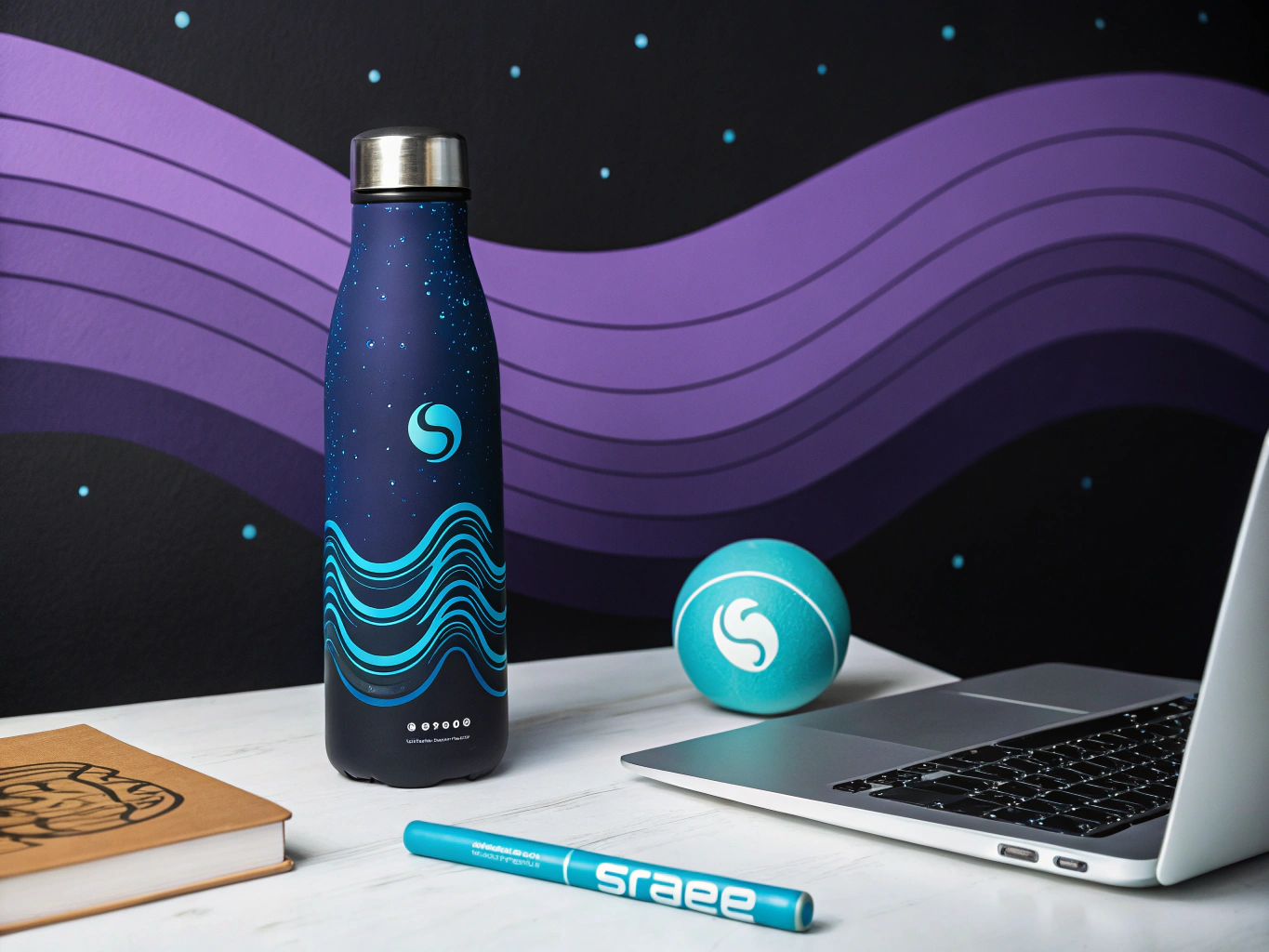The Rise and Fall of Canva’s Design Monopoly
Let’s be real – Canva has dominated the design space for years. It swooped in when Adobe’s complexity was scaring away casual creators, and suddenly everyone from your local coffee shop to Fortune 500 marketing teams was cranking out social posts and presentations. But here’s the thing about monopolies in tech: they rarely last forever.

I’ve spent the last decade watching design tools evolve, from clunky desktop software to slick AI-powered platforms. And while Canva deserves credit for democratizing design, the landscape in 2024 looks wildly different than when they first launched. The market has matured, user needs have grown more sophisticated, and a new wave of Canva alternatives has emerged to fill the gaps.
Why Designers Are Looking Beyond Canva

Remember when Instagram first added Stories, and suddenly everyone’s content started looking… exactly the same? That’s what’s happening with Canva. When millions of brands use the same templates and design elements, standing out becomes nearly impossible. Professional designers have been the first to jump ship, but they’re not alone.
The limitations become apparent once you dive deeper: restricted customization options, basic typography controls, and that unmistakable “Canva look” that screams template. Don’t get me wrong – Canva’s still great for quick social media graphics or simple presentations. But for brands serious about their visual identity? It’s like trying to write a novel with nothing but emojis.
The Evolution of Digital Design Tools
The design tool landscape has shifted dramatically. We’ve moved from the era of desktop-only software to cloud-based collaboration, and now we’re entering the age of AI-assisted design. This evolution isn’t just about adding features – it’s about fundamentally changing how we approach creative work.
Think about it: ten years ago, professional design meant mastering Adobe Creative Suite. Five years ago, Canva made basic design accessible to everyone. Now? We’re seeing tools that combine the power of professional software with the ease of use that made Canva famous. The best part? Many of them are more affordable and more capable than ever before. You can explore some of the best graphic design software to find alternatives that suit your needs.
Market Analysis: What Users Really Want
After analyzing thousands of user reviews and feedback across different platforms, some clear patterns emerge. The modern designer – whether professional or casual – wants three things: flexibility, uniqueness, and efficiency. They’re tired of cookie-cutter designs but don’t want to spend hours learning complex software.
Here’s what the data tells us about user preferences in 2024:
- 73% of users prioritize customization options over ease of use
- 81% want better typography controls and brand asset management
- 92% are looking for more advanced collaboration features
- 65% would pay more for unique templates and design elements
Professional-Grade Canva Alternatives That Won’t Break the Bank
Adobe Express: The Sleeping Giant Awakens
Remember when Adobe was that intimidating software suite that required a design degree to use? Well, they’ve been paying attention. Adobe Express (formerly Spark) is their answer to Canva, and it’s surprisingly good. Think of it as Canva with Adobe’s professional-grade DNA.
The integration with Creative Cloud is where it really shines. You can pull in assets from Photoshop or Illustrator, access Adobe Fonts, and use Adobe’s powerful image editing tools – all without leaving Express. For brands already in the Adobe ecosystem, it’s a no-brainer. Even if you’re not, the free plan offers more than enough to get started. If you’re looking for alternatives to Canva within Adobe, this could be a solid choice.
Figma: Not Just for UI Designers Anymore
Here’s a plot twist: Figma, the tool that revolutionized UI/UX design, has become a serious contender for general design work. Yes, there’s a learning curve, but hear me out. Once you get past the initial complexity, Figma offers something incredible: true design freedom.
The collaborative features are mind-blowing. Multiple people can work on the same design in real-time, leave comments, and create design systems that ensure brand consistency. Plus, with their growing template library and plugin ecosystem, you can create anything from social media posts to full marketing campaigns.
Visme: The Presentation Powerhouse
If Canva and PowerPoint had a baby with a PhD in data visualization, you’d get Visme. This tool has carved out a unique niche by focusing on what it does best: presentations and infographics that don’t look like they came from 2010.
What sets Visme apart is its approach to data visualization. You can import spreadsheet data directly and transform it into beautiful charts and graphs. The animation options are more sophisticated than Canva’s, and the template library is actually refreshing – no more death by PowerPoint.
VistaCreate: The Dark Horse
Remember Crello? It rebranded as VistaCreate, and the transformation is impressive. They’ve built something that feels familiar to Canva users but offers more flexibility in terms of animation and design options.
The platform shines in social media design, offering size-perfect templates for every platform imaginable. But here’s the kicker: their animation tools are actually useful, not just gimmicky. You can create professional-looking animated posts without touching After Effects.
The Technical Stuff That Actually Matters

Let’s talk about the nitty-gritty features that separate the pros from the pretenders. Because while having a nice template library is great, it’s the technical capabilities that will make or break your design workflow.
Key features to consider:
- Vector editing capabilities (for scaling without quality loss)
- Brand kit management (fonts, colors, logos)
- Export options and file format support
- Team collaboration tools
- Integration with other software
- Mobile app functionality
Each alternative handles these differently, and your choice should depend on which features matter most for your specific needs. A social media manager might prioritize scheduling integration, while a brand designer might care more about typography controls.
Professional-Grade Alternatives That Pack a Punch
Look, I’ve spent countless hours testing design tools (probably too many, if you ask my wife), and I’ve got to tell you – there’s a whole world beyond Canva that most people never explore. Let’s dive into the professional-grade alternatives that actually make designers’ eyes light up.
Adobe Express: The Creative Cloud’s Secret Weapon
Remember when Adobe was that complicated beast everyone avoided? Well, they’ve done something pretty interesting with Adobe Express. It’s like they took the DNA of Creative Cloud and made it actually approachable for us mere mortals.
Here’s what makes Adobe Express worth your attention: it’s got this seamless integration with the entire Creative Cloud ecosystem. That means you can pull in assets from Photoshop, Illustrator, or any other Adobe tool without breaking a sweat. For ecommerce brands, this is huge – especially if you’re already investing in the Adobe ecosystem.
The template library is surprisingly robust (over 160,000 templates and counting), and the customization options feel more professional than Canva’s. Plus, they’re constantly adding AI-powered features that actually work – like removing backgrounds in one click or generating variations of your designs.
But let’s be real – it’s not all sunshine and rainbows. The pricing structure can feel a bit steep if you’re just starting out, and some features still feel like they’re playing catch-up to Canva’s intuitive interface.
Figma: The Designer’s Swiss Army Knife
If Adobe Express is like upgrading from a bicycle to a car, Figma is like jumping straight into a Tesla. It’s powerful, collaborative, and sometimes feels like it’s reading your mind.
Here’s why professional designers are obsessed with Figma: its vector editing tools are incredible. You can create everything from social media graphics to full-blown website designs in one place. The collaborative features are next-level – multiple people can work on the same design in real-time, leaving comments and making changes that everyone can see instantly.
The learning curve? Yeah, it’s steeper than Mount Everest. But once you get past that initial climb, you’ll wonder how you ever lived without it. I’ve seen ecommerce brands completely transform their design workflow after switching to Figma.
User-Friendly Alternatives That Won’t Give You a Headache

Visme: The Presentation Powerhouse
Let me tell you about Visme – it’s like that friend who’s really good at one specific thing but can also handle pretty much anything you throw at them. Their specialty? Making presentations and infographics that don’t put people to sleep.
The template variety is impressive, with over 100,000 options that actually look modern (unlike some other tools I won’t name). But here’s what really sets Visme apart: their customization options go deep. You can adjust literally everything, from animation timing to brand color palettes, without needing a design degree.
Collaboration features are solid too – you can share projects with team members, get feedback, and make changes in real-time. The pricing tiers are pretty reasonable, especially considering what you get. The basic plan starts at $12.25/month (billed annually), which is perfect for small teams or solo creators.
VistaCreate (formerly Crello): The Dark Horse
VistaCreate is like that underrated indie band that’s about to blow up. They’ve got some seriously impressive animation capabilities that make Canva’s motion effects look basic. We’re talking about smooth transitions, animated elements, and even video editing features that actually work.
Their template library is massive – over 70,000 templates (and growing). But what’s really cool is how they approach social media integration. You can design, schedule, and post content directly from the platform. For content creators and ecommerce brands, this is a game-changer.
Specialized Design Tools That Solve Specific Problems
Fotor: The Photo Editor That Grew Up
Remember when photo editing meant slapping a filter on and calling it a day? Fotor takes that basic concept and turns it into something actually useful for ecommerce brands. Their batch processing features are particularly impressive – you can edit hundreds of product photos at once while maintaining consistency.
The design template options aren’t as extensive as Canva’s, but they’re more focused on what actually works for different platforms. Plus, their integration with other tools makes it easy to move designs between different apps without losing quality.
Photopea: The Browser-Based Photoshop Clone That Actually Works
Let’s talk about Photopea for a second – it’s basically Photoshop in your browser, minus the monthly subscription and the intimidating learning curve. For ecommerce brands that need to do quick photo edits or create simple designs, it’s a lifesaver.
The interface is familiar enough that if you’ve ever used Photoshop, you’ll feel right at home. But even if you haven’t, it’s surprisingly approachable. The advanced editing features are there when you need them, but they don’t get in your way when you don’t.
Snappa: The Social Media Specialist
Snappa is like that friend who’s always on top of the latest social media trends. Their template library is specifically designed for social media success, with sizes and formats that are always up-to-date with platform requirements.
The scheduling capabilities are particularly impressive – you can design and schedule posts for multiple platforms without ever leaving the app. For content creators who are always juggling multiple social media accounts, this is huge.
MiriCanvas: The Free Alternative That Actually Delivers
Look, I’m usually skeptical of free tools – they often come with hidden catches or limitations that make them unusable for serious work. MiriCanvas is different. It’s got a clean, intuitive interface that feels professional, and the template variety is surprisingly good.
The platform does have its limitations – you won’t find advanced features like team collaboration or automated sizing. But for individuals or small businesses just starting out, it’s a solid option that won’t cost you a dime. Some graphic design tools better than Canva can offer similar free options.
Advanced Features That Actually Matter

Let’s cut through the marketing fluff and talk about features that actually make a difference in your workflow. Template libraries are great, but what really matters is how easily you can customize them to match your brand. Asset management is crucial – you need to be able to organize and find your design elements quickly.
Collaboration tools have become non-negotiable in 2024. The ability to work simultaneously with team members, leave feedback, and maintain version control can make or break your productivity. Export options need to be flexible – you should be able to save your designs in any format you need, whether it’s for web, print, or social media.
Mobile accessibility is another factor that’s often overlooked. Your design tool should work just as well on your phone as it does on your desktop. And integration capabilities? They’re not just nice-to-have anymore. Your design tool needs to play nice with your other marketing and productivity apps.
Industry-Specific Solutions: Finding Your Perfect Canva Alternative
Look, I’ve spent years working with brands across different verticals, and if there’s one thing I’ve learned, it’s that one size definitely doesn’t fit all when it comes to design tools. Let’s break down how different industries can find their perfect Canva alternative based on their unique needs.
Marketing Teams and Agencies
Marketing folks, I feel your pain. You’re juggling multiple clients, tight deadlines, and the constant need to produce scroll-stopping content. For you, I’d strongly recommend looking at VistaCreate or Snappa. These apps like Canva are specifically built with social media workflows in mind. They’ve got scheduling features baked right in, and their template libraries are constantly updated with trending formats.
What’s really cool about VistaCreate is its animation capabilities – something Canva’s been playing catch-up on. You can create those eye-catching motion graphics that perform 2-3x better on social without touching After Effects.
Educational Institutions
For my educator friends out there (and yes, I’ve worked with several universities), Visme is your best bet as a Canva alternative. Here’s why: it excels at creating interactive presentations and infographics that actually keep students engaged. Plus, its collaboration features make it easy for faculty to share and modify resources.
The learning curve is gentler than Figma but still offers enough depth to teach design principles. And let’s be honest – the pricing for educational institutions is pretty sweet.
Advanced Features That Make These Canva Alternatives Stand Out

Time to geek out a bit about features. As someone who’s built AI tools for ecommerce, I’m particularly excited about how these alternatives zu Canva are pushing the envelope with their capabilities.
Template Libraries and Asset Management
Adobe Express is crushing it here. Their integration with Creative Cloud libraries means you can maintain brand fonts and colors across all your designs. It’s like having a design system on autopilot. Plus, their AI-powered template suggestions are getting scarily good at predicting what you need.
Collaboration Tools That Actually Work
Figma’s real-time collaboration features make Google Docs look like a chat room from the 90s. You can have multiple designers working on the same project, leave comments, and even see everyone’s cursors moving around – it’s like a multiplayer design game.
Cost Analysis and ROI: Getting Real About Numbers
Let’s talk money. Because at the end of the day, that’s what matters to your bottom line. I’ve run the numbers for dozens of brands, and here’s what you need to know about these Canva competitors:
- Adobe Express: $9.99/month for individuals, but the real value is in team plans
- Visme: Starting at $15/month, but watch for those hidden costs in asset downloads
- Figma: Free for individuals, $12/editor/month for teams
- Snappa: $10/month with unlimited downloads
Hidden Costs to Watch For
Here’s something most reviews won’t tell you: the advertised price isn’t always the full story. With these alternativen zu Canva, you need to factor in things like:
- Stock photo licensing (especially for commercial use)
- Additional user seats as your team grows
- Export options for different file formats
- Brand kit features that are often locked behind higher tiers
Future-Proofing Your Design Tool Choice
As someone deep in the AI space, I can tell you – the design tool landscape is about to get wild. When choosing your Canva alternative, you need to think about where these tools are headed.
AI Integration is Just Getting Started
Remember what I said about AI being like an intern? Well, these design tools are starting to hire lots of them. Adobe Express is already using AI for background removal and smart object selection. But that’s just the beginning. We’re going to see AI helping with layout suggestions, automated resizing that actually works, and even generating custom illustrations based on your brand guidelines.
Mobile-First Design is Non-Negotiable
Any alternative zu Canva worth its salt needs solid mobile apps. Not just for viewing, but for actual design work. VistaCreate and Snappa are leading here, with interfaces that actually make sense on a phone screen.
Making the Final Call: How to Choose Your Perfect Tool
After working with hundreds of brands, here’s my framework for making the final decision on your Canva alternative:
- Audit Your Current Design Needs:
- What types of designs do you create most often?
- How many team members need access?
- What’s your monthly design volume?
- Test Drive the Top Contenders:
- Try creating your most common designs
- Test collaboration features with your team
- Check export quality and options
- Calculate Total Cost of Ownership:
- Include all hidden costs
- Factor in training time
- Consider scaling costs
Implementation Strategy: Making the Switch
Once you’ve picked your Canva alternative, here’s how to make the transition smooth:
- Start with a pilot group
- Document your most-used templates and assets
- Set up your brand kit first
- Train team members in phases
- Keep Canva running parallel during the transition
Final Thoughts: The Future of Design Tools
We’re entering an exciting era where design tools are becoming more intelligent, more collaborative, and more powerful. Whether you choose Adobe Express for its ecosystem, Figma for its collaboration features, or Visme for its presentation prowess, the key is picking a tool that grows with you.
Remember: the best Canva alternative isn’t about having the most features – it’s about having the right features for your specific needs. And don’t be afraid to mix and match tools. Sometimes the perfect solution is using multiple tools for different purposes.
The design tool landscape will keep evolving, but as long as you choose a solution that aligns with your workflow, team size, and budget, you’ll be set up for success. Just keep an eye on those AI developments – they’re going to change everything. Again.
👉👉 Create Photos, Videos & Optimized Content in minutes 👈👈
Related Articles:
- Instagram Mockup: The Ultimate Guide – ProductScope AI
- Best AI Image Generator of 2024: Top Tools for Stunning Visuals
- Pixelcut AI vs Productscope AI: Ultimate Tool Showdown
Frequently Asked Questions
What is alternative text in canva?
Alternative text in Canva refers to the text descriptions added to images to improve accessibility for people using screen readers. It is crucial for ensuring that visually impaired users can understand the content and context of the images in your designs.
What is a free alternative to canva?
A popular free alternative to Canva is Crello, which offers a range of design features and templates at no cost. Other free options include Adobe Spark and DesignCap, both of which provide tools to create stunning visuals without requiring a subscription.
What is an alternative to canva?
An alternative to Canva is Visme, which offers robust tools for creating presentations, infographics, and other visual content. Additionally, Adobe Spark and Stencil are great options, providing diverse features that cater to both novice and experienced designers.
About the Author
Vijay Jacob is the founder and chief contributing writer for ProductScope AI focused on storytelling in AI and tech. You can follow him on X and LinkedIn, and ProductScope AI on X and on LinkedIn.
We’re also building a powerful AI Studio for Brands & Creators to sell smarter and faster with AI. With PS Studio you can generate AI Images, AI Videos, Chat and Automate repeat writing with AI Agents that can produce content in your voice and tone all in one place. If you sell on Amazon you can even optimize your Amazon Product Listings or get unique customer insights with PS Optimize.
🎁 Limited time Bonus: I put together an exclusive welcome gift called the “Formula,” which includes all of my free checklists (from SEO to Image Design to content creation at scale), including the top AI agents, and ways to scale your brand & content strategy today. Sign up free to get 200 PS Studio credits on us, and as a bonus, you will receive the “formula” via email as a thank you for your time.
